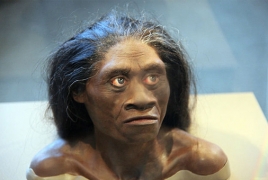Researcher claim prehistoric women were stronger than today's rowers November 30, 2017 - 14:24 AMT PanARMENIAN.Net - Prehistoric women had stronger arms than elite female rowing teams do today thanks to the daily grind of farming life, researchers have revealed, shedding light on their role in early communities, The Guardian reports. The study of ancient bones suggests that manual agricultural work had a profound effect on the bodies of women living in central Europe between about the early neolithic and late iron age, from about 5,300BC to AD100. “We think a lot of what we are seeing is the bone’s response to women grinding grain, which is pretty much seated but using your arms really repetitively many hours a day,” said Dr Alison Macintosh, co-author of the research from the University of Cambridge. The study also reveals that the strength of women’s arm bones dropped over time – probably as technology was developed to ease manual labour. By medieval times, the strength of women’s arm bones was on a par with that of the average woman today. The research builds on previous work by the team on male leg bones, which revealed a decline in strength since the late iron age. “Early farming men had these really strong leg bones – when you compared them to living men they were close to what you see in living runners, suggesting they were really active,” said Macintosh. “Then [there is] this really progressive decline though time in bone strength, down to what you see in living sedentary undergraduate students at Cambridge.” With similar trends not seen for women, Macintosh and colleagues decided to explore whether skeletal remains could offer other clues about the roles of women in early farming communities. To do so they explored the remains of 94 women spanning about 6,000 years, from the time of the early neolithic farmers (dating back to around 5,300 BC) through to the 9th century, from countries including Germany, Austria, and northern Serbia. In addition, the team looked at scans from bones of 83 living women who fell into four groups: runners, rowers, footballers and those who were not particularly sporty. The researchers explored the strength of two bones: the tibia, or shin-bone, and the humerus – the long bone in the upper arm. Azerbaijani authorities report that they have already resettled 3,000 people in the Nagorno-Karabakh town of Stepanakert. On June 10, Azerbaijani President of Azerbaijan Ilham Aliyev will leave for Turkey on a working visit. Azerbaijani President Ilham Aliyev arrived in Moscow on April 22 to hold talks with Russian counterpart Vladimir Putin. Authorities said a total of 192 Azerbaijani troops were killed and 511 were wounded during Azerbaijan’s offensive. Partner news |